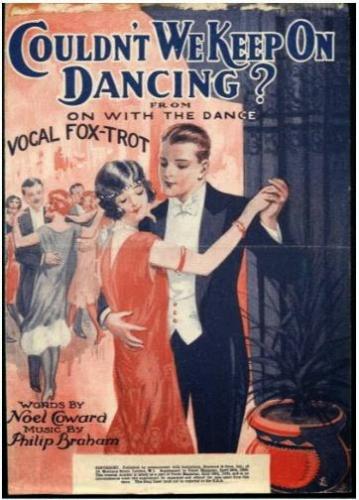- Jazz Age Manners
- Cutting In to the Dance in the Jazz Age
- Dance Etiquette - 1926
- Same-Sex Social Dancing in the Jazz Age
- Shocking Fashion Trends in 1920 or The Adventures of Minnie Fewclothes
- Social Dancing and the Art of Conversation
- Some Thoughts on Men and Clothes at a Jazz Age Event
- The Wearing (or not Wearing) of Gloves in the Jazz Age
- Where People Danced in the Jazz Age
Cutting In to the Dance in the Jazz Age
 Editor's note: I post this to address questions I have received from time to time about the topic. Unlike much of what I post, I do not advocate its return. I think this a bad custom, and am delighted that it has fallen into disuse. The annoyance of having an already brief dance cut short, its tendency to add further evidence of popularity to a few and lack of it to many more, and the fact that the lady has no option of refusing make it entirely obnoxious. However, for purposes of education here it is.
Editor's note: I post this to address questions I have received from time to time about the topic. Unlike much of what I post, I do not advocate its return. I think this a bad custom, and am delighted that it has fallen into disuse. The annoyance of having an already brief dance cut short, its tendency to add further evidence of popularity to a few and lack of it to many more, and the fact that the lady has no option of refusing make it entirely obnoxious. However, for purposes of education here it is.
From "Modern Ballroom Dancing" by Lillian Ray, 1930.
Cutting In
Program dances have gone out almost entirely. Cutting in during dances has become a recognized practice. The man who wishes to cut in taps the girl's partner on the shoulder quietly. The dancer must relinquish his partner courteously and cheerfully. The girl has no choice in the matter.
The custom has its drawbacks as it is often annoying to leave a partner whom you particularly like, to dance with one for whom you may not care in the least. However, it is not good form to refuse to dance with a man who cuts in. Nor can the first partner of the girl cut in on the man who took her from him. He can cut in on her next partner though. A man must not continue to cut in on the same man when he dances with another partner. For example if John Bart cuts in on Harry Gray when the latter is dancing with Janet Stone, John cannot cut in on Harry when he dances with Helen Barclay. If he did so, Harry would think, and rightly, that John was deliberately trying to spoil his evening and take all his partners from him.
From "Bernice Bobs Her Hair" by F. Scott Fitzgerald, 1920
No matter how beautiful or brilliant a girl may be, the reputation of not being frequently cut in on makes her position at a dance unfortunate. Perhaps boys prefer her company to that of the butterflies with whom they dance a dozen times an evening, but youth in this jazz-nourished generation is temperamentally restless, and the idea of fox-trotting more than one full fox trot with the same girl is distasteful, not to say odious. When it comes to several dances and the intermissions between she can be quite sure that a young man, once relieved, will never tread on her wayward toes again.
Cutting in, with a difference.
